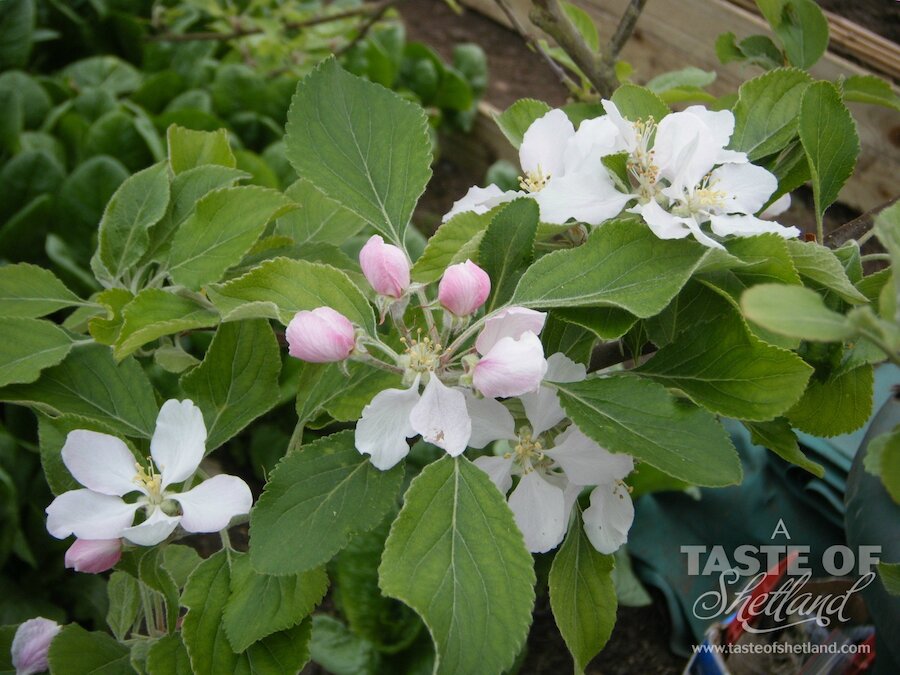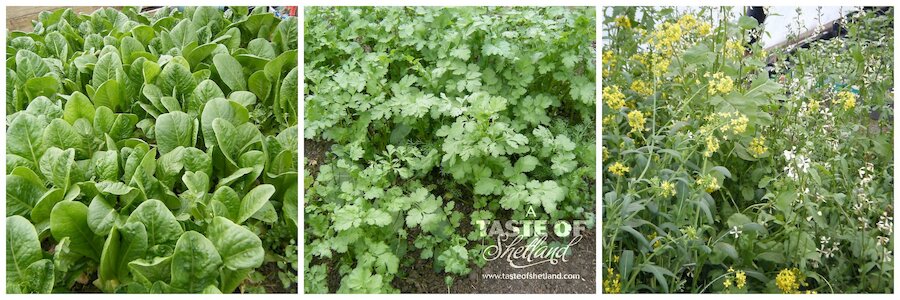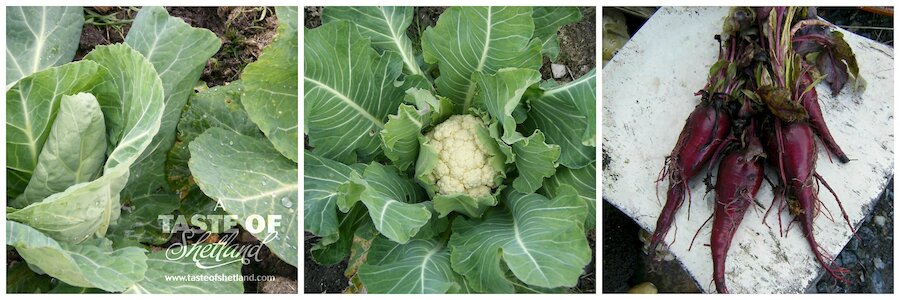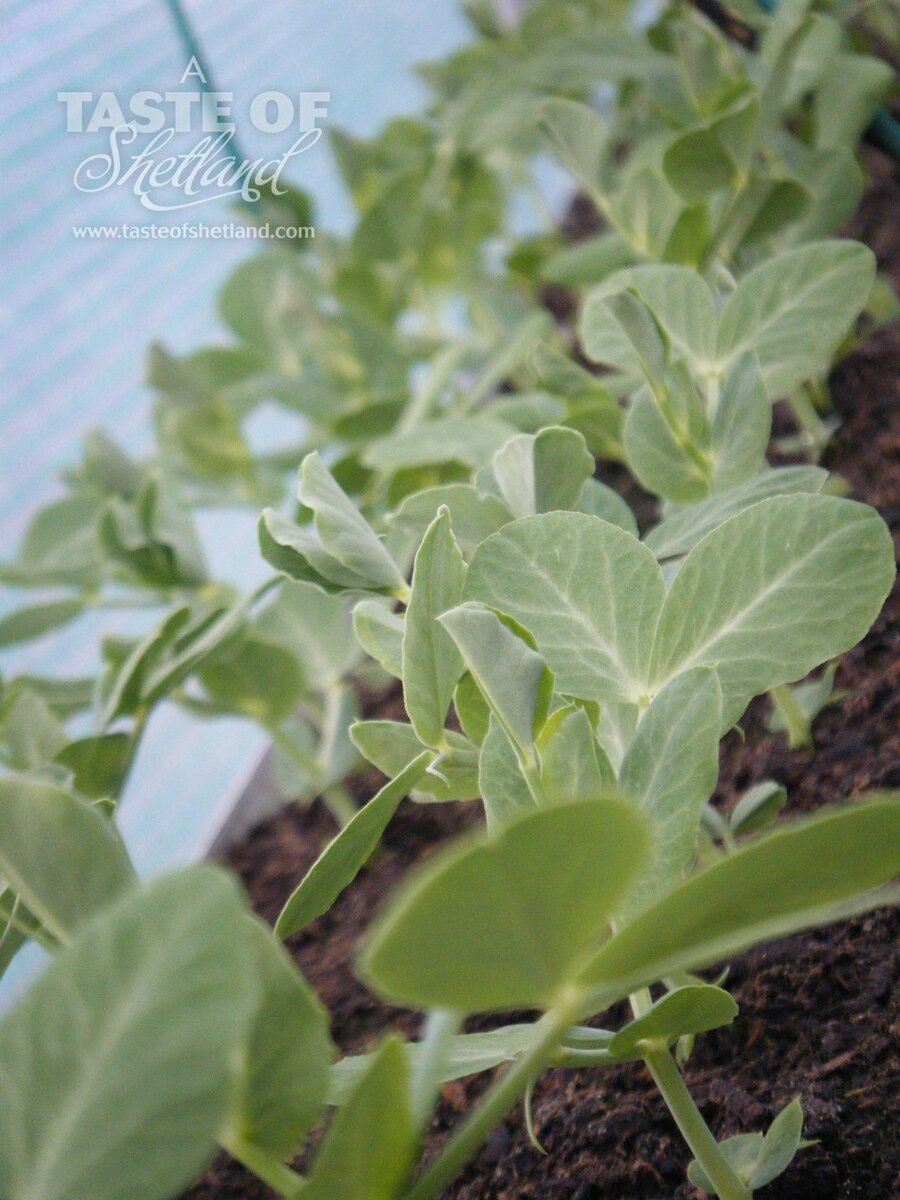Ten days ago we harvested our first cauliflowers and beetroot of the season, which made us very happy! That week the veg boxes also had a selection of kale, purple sprouting broccoli, spinach, chard, salad and the herbs coriander, fenugreek and basil. One of the aims of our enterprise is to demonstrate the potential for providing year round fresh veg in Shetland and we always get really excited when our forward planning comes to fruition.
Everything except the fenugreek and basil was sown in last year's growing season in preparation for providing fresh veg in spring. We've been lucky with the winter (you might not think it), the warm air and southerly wind although it has brought rain, has been kind to the overwintering plants. There were no heavy frosts or snowfall to contend with and no searing, salty northerly gales. Being Shetland there is time yet,as we go into our lambing, for the snowy gales and we fully expect to be worrying about the icy blasts harming the newborns.
But the veg has done well. Eating your home grown produce all year round is one thing, getting fresh vegetables between prime growing seasons in Shetland is another. We do well at preserving our excess beans, peas and sweetcorn in the freezer, we even dry courgettes, which work well in stews and soups at this time of year. Eventually the stored root veg runs out. Or the weather gets too warm and they go soft or start to grow. We get used to doing without the ubiquitous carrot in family meals (I have to admit to buying some from the Co-op sometimes when we have lots of hungry vegetarian volunteers to feed) and changing our meals to suit the season. So it's always exciting to get the new freshly harvested varieties from the plot.
This year we started with salad in February. There's a whole range of lettuce and cress which cope with cold winter weather and short dark days. 'Winter Density' lettuce or 'Green in Snow' a (really) spicy leaf for instance. Great flavours, sow them in August in pots or fish boxes; cover or move it into a poly-tunnel/greenhouse/porch by the end of September or early October and you should have enough edible leaves to begin harvesting in late February. We never know how the winter will turn out but if you have space it is worth sowing some of the spicy salad greens such as Mizua, Mibuna, Red Mustard and Rocket in the same way. They are not frost hardy but you can try covering them with fleece for extra protection at night, and if the winter is a mild one, they too will start producing well by February.
Back to those wonderful caulis and beetroot. Both were sown in June last year and are varieties that have a long growing season, bred to mature early in the year. It is important to get your varieties right when trying to extend the growing and eating season. There are a wide range of cauliflower varieties that require different cold periods to produce their curds (the part we eat). Each year we trial different varieties to see how they do in the Shetland conditions. The type we are harvesting at the moment are 'Maystar' which, despite their name, have consistently produced in April over many years. The beetroot is 'Cheltnham Green Top', an old fashioned variety that sits well over the winter and comes good at this time of year.
We sow seeds of all varieties from late January until early September to get the year round produce. Our sowing planner stretches for seven A4 pages, organised weekly. There is non-stop organising, moving plants about, hardening off and planting out. It takes some planning to know when to bring on early or stagger things so we can prolong the harvest. We are not experts and the knowledge we have gained has been through trial and error, experiment and observation. The complications of each season, of each year, are unknown and the outcome never predictable. We will always be learning. The reward is in the eating, the sharing with our customers and in the passing on of our learning to encourage others to produce year round fresh veg in Shetland.




